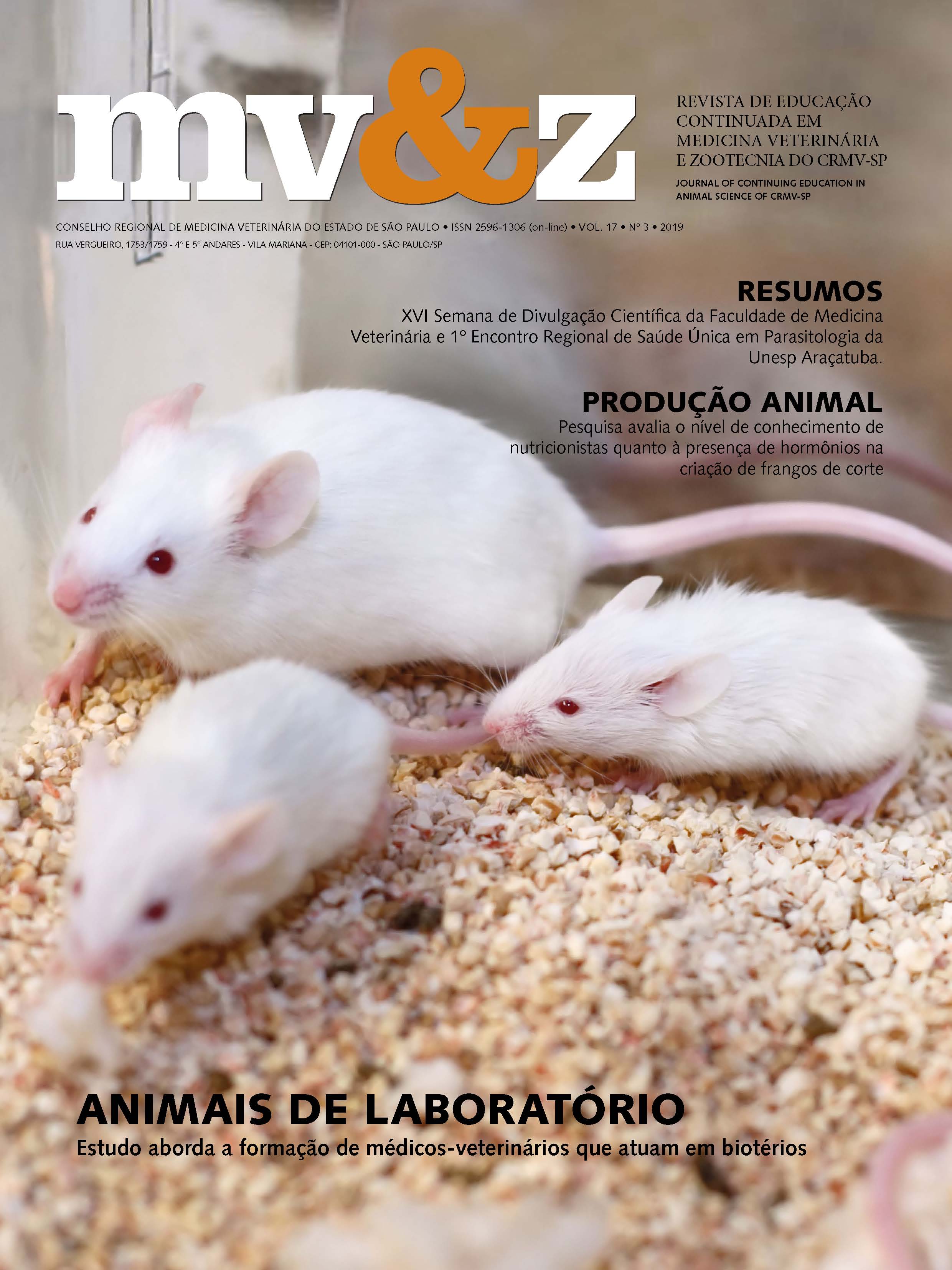Thermographic evaluation of exercise influence on the joints of the hind legs of healthy dogs
Main Article Content
Abstract
Many muscular contractions occur when an exercise is performed, transforming the chemical energy from food ingested into kinetic energy. No organism can achieve 100% efficiency in this process; the remaining is thus converted into thermic energy, generating heat that will be transported to superficial tissues and dissipated through the skin. Such energy release can be captured and measured by thermography, which registers infra-red emissions, indicating the body temperature. This study observed how the joints of the hind legs of healthy dogs thermally behave when submitted to different activities to evaluate how much each joint is required for the execution of the exercises. Twelve healthy dogs were submitted various activities: going up stairs, going down ramps, sitting and standing, and walking. The temperature of the hip, knee and tibiotarsal joints were measured on both sides of the animals before and after the exercises. The statistical analysis of results showed that a slight thermic variation occurred between the joints before and after the exercises, suggesting that soft exercises do not require as much from the studied joints as intense exercises, as reported in other studies.
Article Details
1. Autores mantém os direitos autorais e concedem à revista o direito de primeira publicação, com o trabalho licenciado sob a Creative Commons Atribuição-NãoComercial-SemDerivações 4.0 Internacional
2. Autores têm autorização para assumir contratos adicionais separadamente, para distribuição não-exclusica da versão do trabalho publicada nesta revista (ex.: publicar em repositório institucional ou como capítulo de livro), com reconhecimento de autoria e publicação inicial nesta revista.
3. Autores têm permissão e são estimulados a publicar e distribuir seu trabalho online (ex.: em repositórios instituicionais ou na sua página pessoal) a qualquer ponto antes ou durante o processo editorial, já que isso pode gerar alterações produtivas, bem como aumentar o impacto e a citação do trabalho publicado (Veja O Efeito do Acesso Livre);
